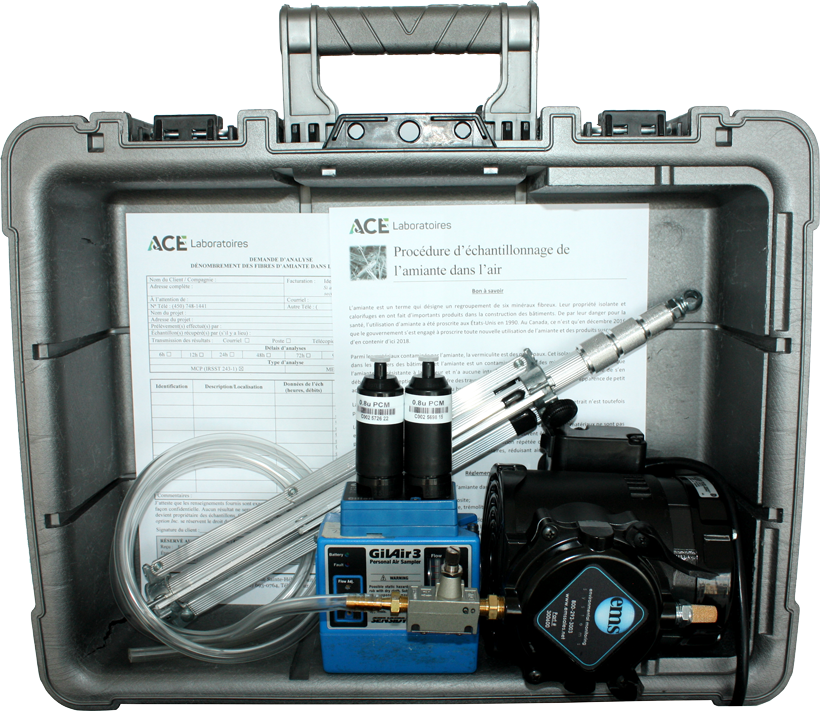- info@acelabo.com
- +1-450-693-0764
Asbestos Fibers Analysis in Ambient Air

ACE Laboratoires Inc. technicians are certified by the IRSST for the count of asbestos fibers in the ambient air. The reference method used by our department is the phase contrast microscopy from the IRSST (method 243-1).
Health Hazard
Materials likely to contain asbestos remain harmless as long as these materials are not damaged. If these materials are altered, asbestos fibers can be released into ambient air and can be inhaled by the occupants. Following repeated or prolonged exposure, asbestos fibers can cause destruction of lung tissue, reducing their elasticity and causing symptoms of shortness of breath, known as asbestosis.
Asbestos fibers can be released into the air when sanding, stripping, drilling or removing work is performed on materials such as:
- Insulators containing asbestos, including insulation found around hot water pipes and reservoirs;
- Roofing, felt or asbestos containing clapboards;
- Vinyl asbestos floor tiles;
- Soundproofed ceiling tiles containing asbestos;
- Cement, plaster or joint compound containing asbestos;
- Caulking containing asbestos.
Regulation
In the case of a quotidian ait test of asbestos in ambient air, the RSST suggests a maximum of:
- 0.2 fiber / cm3 for crocidolite and amosite;
- 1 fiber / cm3 for chrysotile, actinolite, tremolite and anthophyllite.
In a final release test, the ambient air must contain less than 0.01 fibers per cm3 according to the regulation on Occupational Health and Safety in Quebec (Law on health and safety at work; chapter S-2.1, a. 223). A higher concentration represents a health hazard.
When to Request this analysis
The analysis of asbestos fibers in ambient air is of particular importance when it comes to asbestos removal. Indeed, daily tests of asbestos in the air and a final release test of asbestos in the air are necessary during and after construction and asbestos removal.
Sampling
Ambient air sampling for asbestos fiber counting in a daily test is performed using an air pump calibrated to sample 3 to 4 liters per minutes, for a total of 100 liters in the working area. In the clean changing room, the debit is 16 liters per minute, for 700 to 800 liters. While in a final release test, the pump is calibrated to sample 16 liters per minute. A minimum volume of 3800 liters is required in both types of analysis. The air is drawn through a filter of mixed cellulose esters (MCE) to collect the fibers. The filters are clarified and maintained in a medium with a refractive index of less than or equal to 1.46 favoring the observation of the fibers.
For additional information, please contact us.



